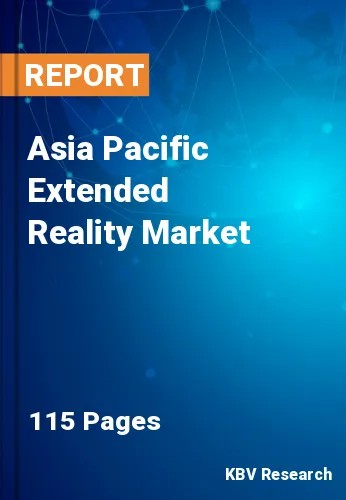The Asia Pacific Extended Reality Market would witness market growth of 30.8% CAGR during the forecast period (2022-2028).
Virtual reality is also being used by automotive businesses to shorten the time between conceptual design and practical modeling. There is no requirement to create actual prototypes. Instead, information and resources for access control are given to engineers and technicians through an AR interface. Digital twins are used in production to visualize regional problems and flaws more quickly. Risky situations can be easily reenacted during staff training.
Moreover, AR and VR are encouraging deeper audience engagement with digital content. Digital connections have assumed prominence in the personal, business, and leisure spheres as a result of the pandemic. For example, experts and spectators are able to access real-time information about the weather, ball speed and trajectory, player history, and other topics by utilizing VR technology. The same holds for concerts, theatrical performances, and amusement parks.
Businesses also depend on MR technology to greatly expand people's understanding of the world by superimposing information on the real environment. Additionally, it can enhance cooperation by allowing remote teams to view the task in real time and give more accurate feedback. Successful MR content for the entertainment industry needs to elicit an emotional response from the viewer.
A new experience studio has been established at the NITI Aayog Frontier Technologies Cloud Innovation Center (CIC) attributable to collaboration between NITI Aayog, Intel, and Amazon Web Services (AWS). Additionally, the National Institution for Transforming India (NITI Aayog) is the national policy think tank of the Indian government. The studio will serve as a center for experimentation and collaboration between government stakeholders, businesses, startups, and industry domain experts to promote problem-solving and innovation. The regional market would expand as a result of this factor.
The China market dominated the Asia Pacific Extended Reality Market by Country in 2021, and would continue to be a dominant market till 2028; thereby, achieving a market value of $12,559.9 million by 2028. The Japan market is estimated to grow a CAGR of 30% during (2022 - 2028). Additionally, The India market would experience a CAGR of 31.6% during (2022 - 2028).
Based on Component, the market is segmented into Hardware, Software and Services. Based on Technology, the market is segmented into Virtual Reality (VR), Augmented Reality (AR) and Mixed Reality (MR). Based on End User, the market is segmented into Gaming, Aerospace & Defense, Manufacturing & Industrial, Healthcare, Education, Retail, Media & Entertainment and Others. Based on countries, the market is segmented into China, Japan, India, South Korea, Singapore, Malaysia, and Rest of Asia Pacific.
Free Valuable Insights: The Worldwide Extended Reality Market is Projected to reach USD 161.6 Billion by 2028, at a CAGR of 29.7%
The market research report covers the analysis of key stake holders of the market. Key companies profiled in the report include Meta Platforms, Inc. (Facebook), Sony Corporation, Microsoft Corporation, Google LLC (Alphabet Inc.), Accenture PLC, Qualcomm Incorporated (Qualcomm Technologies, Inc.), HTC Corporation, Unity Software, Inc., Adobe, Inc., and SoftServe, Inc.
By Component
By Technology
By End User
By Country
Our team of dedicated experts can provide you with attractive expansion opportunities for your business.

